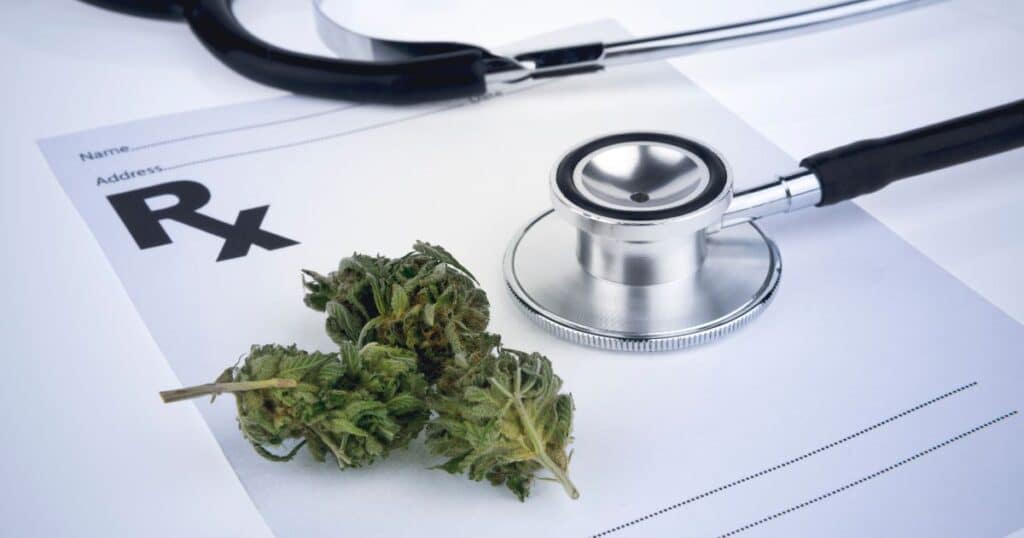The opioid crisis has devastatingly affected communities across the United States, prompting a search for alternative, safer pain management options. A recent study by Ohio State University’s Drug Enforcement and Policy Center reveals that medical marijuana could be a viable solution. The study found that three out of four patients reported a reduction in their use of opioids and other painkillers after using medical marijuana.
In the first report to come out of the annual survey by DEPC @OSU_Law of current and potential Ohio #medicalmarijuana patients, we found that a large majority agreed that using #marijuana reduced their use of prescription painkillers.
— Drug Enforcement and Policy Center at Ohio State (@OSULawDEPC) July 16, 2024
Read report: https://t.co/MaXtc9K3Rd pic.twitter.com/NmvbhWLleM
Ohio Study on Medical Marijuana
Peter Leasure, a Senior Research Associate at the Drug Enforcement and Policy Center at the Moritz College of Law, conducted the study to evaluate how effective medical marijuana is in reducing the use of prescription painkillers and illicit drugs. Over 3,500 respondents participated in the survey, making it one of the most comprehensive studies of its kind in the state. The survey participants were primarily medical marijuana patients and their caregivers, providing a unique perspective on the efficacy of cannabis as an alternative pain treatment.
The key findings of the survey revealed that:
- 77.5% of respondents agreed that using marijuana reduced their need for prescription painkillers.
- 26.8% reported a decrease in their use of illicit drugs.
- A small minority, just 1.7%, disagreed that marijuana reduced their need for prescription painkillers.
Interestingly, the study found that daily marijuana users were more likely to report a reduction in their need for prescription painkillers compared to those who used marijuana less frequently. Specifically, 80.54% of daily users versus 70.14% of non-daily users noted decreased painkiller use. This trend was also observed in the reduction of illicit drug use, with about 30.6% of daily users reporting diminished need compared to 17.5% of non-daily users.
A Shift in Pain Management?
The findings from the Ohio study highlight a model shift in pain management. Traditional reliance on opioid-based medications is increasingly questioned due to the risk of addiction and overdose. Medical marijuana offers a promising alternative, providing effective pain relief with fewer side effects and lower addiction potential.
The study author suggests several policy implications based on their findings. One notable recommendation is for probation and parole offices to reconsider prohibitions on marijuana use for individuals with a history of opioid use.
Allowing these individuals to use medical marijuana could reduce their reliance on opioids and other illicit drugs, ultimately lowering the risk of technical violations and new criminal activity.
The study advocates for more rigorous research to understand better the nuances of the substitution effect—where patients choose marijuana over opioids or other drugs for pain management.
Moving marijuana from Schedule I to Schedule III of the federal Controlled Substances Act, which is currently being attempted, would facilitate this research, allowing for more comprehensive studies and experimental trials.
How We Can Help the Future of Pain Management with Medical Marijuana
Continued research is essential to fully understand the benefits and limitations of medical marijuana in pain management. Consequently, studies that explore long-term effects, optimal dosages, and patient outcomes will provide valuable insights and guide best practices.
Additionally, advancements in medical technology and data analysis can enhance the precision and effectiveness of medical marijuana treatments. Moreover, personalized medicine approaches, driven by genetic and biometric data, could optimize treatment plans and improve patient outcomes.
Furthermore, building a supportive community around medical marijuana use can help reduce stigma and promote healthier, safer pain management practices. Therefore, educational initiatives, support groups, and public awareness campaigns can foster a more informed and accepting environment.

This study highlights the potential of medical marijuana to reduce reliance on opioids and other painkillers, thereby offering a safer alternative for pain management. Moreover, with significant proportions of patients reporting decreased use of prescription and illicit drugs, medical marijuana thus presents a promising avenue for addressing the opioid crisis.
However, further research and thoughtful policy changes are necessary to realize its full potential. By staying informed and advocating for evidence-based practices, we can pave the way for a future where pain management involving medical marijuana is both effective and safe.
















